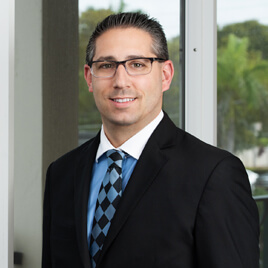
Florida law provides that an individual who is on the grounds of a religious institution for services and festivities, which are being performed for the benefit of the individual, and not for the religious institution, is considered a licensee and not an invitee for purposes of premises liability issues. See Broad St. Christian Church v. Carrington, 234. So.2d 732 (Fla. 2d DCA 1970). Moreover, Florida law provides that, in order for the status of an individual to be raised from "licensee" to "invitee", the benefit derived by the religious institution "must be of a material or commercial, rather than of a spiritual, religious or social nature." Id. at 733.
To establish a claim for negligence in Florida, a plaintiff must establish (1) that a defendant owned a duty, or obligation, recognized by the law, requiring a defendant to conform to certain standard of conduct, for the protection of others against unreasonable risks; (2) that the defendant failed to conform to that standard; (3) that there is a "reasonably close" causal connection between the nonconforming conduct and the resulting injury … commonly known as 'legal cause' or 'proximate cause'; and (4) that the plaintiff sustained actual harm. See Clay Elec. Coop., Inc. v. Johnson, 873 So. 2d 1182, 1185 (Fla. 2003) (quoting Prosser & Keeton on the Law of Torts 164-65 (W. Page Keeton ed., 5th ed. 1984)).
In Florida, with regard to an individual on the grounds of a religious institution, the duty owed to such an individual is one of reasonable care (i.e. what would a reasonable person do to ensure the safety of the individual). However, in the face of a pandemic/epidemic this duty has changed and the social expectation differs from what it did no more than three months ago. Prior to the pandemic, mass gathering occurred at religious institutions across the state, without giving a thought to a congregant's cough or non-existent symptom of an underlying infection; hands were shaken, hugs were had and community items were shared (i.e. Torah scroll, pew seats, Communion cups, bibles, etc.). Since the pandemic, the physical greetings, sharing of community items, and mass gatherings have ceased. As the State begins to allow gatherings, the question is what is the "new normal" and new standard of care. The following presents a guidepost of what a religious institution may do to not only meet the new "reasonable standard of care" but exceed it as well, thereby mitigating any liability it may have for an individual that claims (s)he contracted an illness whilst on the premises.
The societal standard for cleanliness prior to the impact of COVID-19 is markedly different than society's standard today. Today's standard now requires adherence to the cleaning and disinfection guidance published by the Centers for Disease Control ("CDC"), which calls for frequent and vigorous application of cleaning procedures. Further, religious institutions should also consider taking reasonable steps to exclude infected or previously-exposed individuals from physically attending any program or event offered by the institution.[1] Moreover, the institution should require that all greeters/ushers direct all congregants and/or participants arriving for a service or event to the bathroom to wash their hands and to keep the doors to the sanctuary open in order to reduce the number of times door handles are touched. During services and programs, religious leaders should encourage the participants/congregants to space out where they sit in order to enforce some measure of social distancing. Religious leaders within and across communities should meet and enforce the same rules for physical prayer in order to avoid multiple people touching the same items (collection plate, Communion cup, Torah scroll, etc.). This will also help to create a sense of community, within each religion, that will not waiver from institution to institution should individuals visit institutions other than their "home base" for events or programs. Moreover, to further ensure enforcement, religious leaders should provide an explanation as to why there is a change in the time-honored traditions that the congregants are used to, as this may further embolden an individual's understanding that the institution is taking all the "necessary precautions" for the safety of its congregants and others. Further, religious institutions must ensure that the common areas and items used by various individuals throughout the day (including door handles, restrooms, pews, prayer books, etc.) are wiped down constantly with appropriate cleaners in order to mitigate the risk of spread of any germs. A list of products that EPA-approved for use against the virus that causes COVID-19 is available on the CDC website at www.cdc.gov.
Additionally, religious institutions must take all necessary measures in order to ensure the health and safety of its employees and volunteers, as an infirmed employee becomes a liability to the overall community attending programs and events at the institution. The Employment Safety & Health Guide (2019 Ed.), contains a checklist created by the Department of Health and Human Services and the CDC to identify steps that faith-based and community organizations can take to prepare for a pandemic. A copy of this checklist may be accessed at either www.cdc.gov or www.hhs.gov. The utilization of this checklist, in congruence with the methods and procedures outlined herein, along with CDC guidelines for cleaning and sanitizing will provide a religious institution with the armor necessary to assist in establishing that it did not breach its duty of care in providing a clean and safe environment for its congregants and the public in general.
[1] This of course does not preclude any individual, from attending the program or event virtually. Therefore, it is incumbent upon the institution to offer the programs and events on an online platform. By not offering this service, the religious institution may run afoul of the rights afforded to those who enjoy benefits under the Americans with Disabilities Act; however, this note does not discuss this topic.


